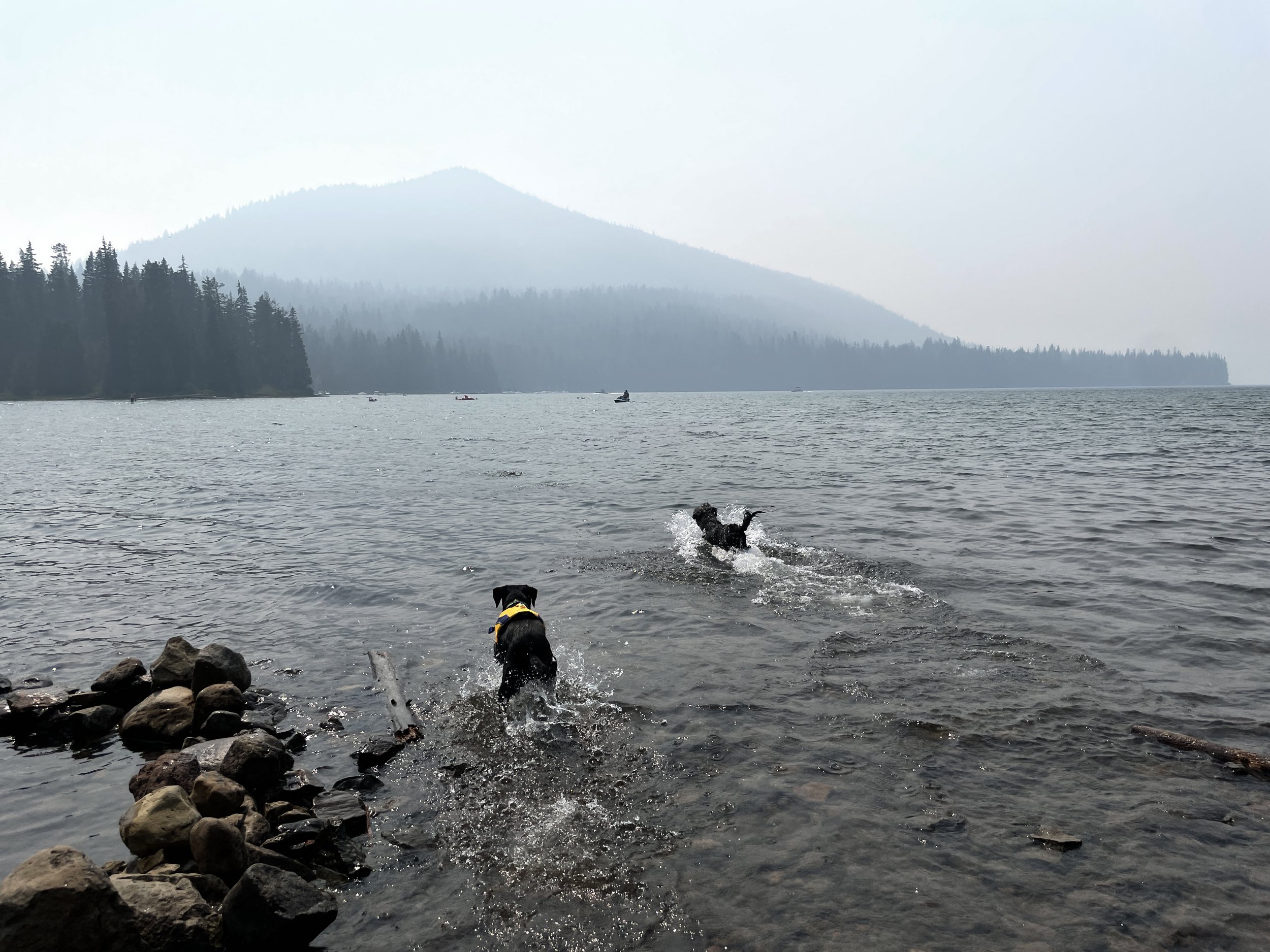
Climate Smart Pets
We’ve all seen the images: pets on rooftops surrounded by floodwaters, people staying in their homes while disasters strike when shelters don’t allow pets, heroic stories of firefighters rescuing animals from wildfire. But these images are only part of the story. The impacts of climate change on our pets reach all of our social systems, from housing, to veterinary care and disease spread, to taxing an already strained animal shelter network, and more. Yet, climate planning processes often omit the needs of companion animals and the humans who care for them, not recognizing how these deep and impactful relationships can be strained by climate events. Climate Smart Pets seeks to raise awareness of the needs of companion animals and their families when climate planning- and how by doing so, we can advocate for climate smart housing, reduce shelter populations, address disease, and be better prepared overall when disaster strikes.
Photo: Our dogs under smoky skies in Central Oregon
Let’s Learn Together.
How can we better prepare ourselves to keep our animals safe when disaster is on its way? What does animal care post-disaster look like? Working with public agencies and supportive responders, we can be ready to take care of companion animals and their human families before, during, and after climate events.
Housing that is not climate ready. Insurance and landlord breed bans. Accommodating climate refugees and their pets. All of these and more can force people to have to surrender their pets to shelters, and make hard choices to stay with their pets. Pet lovers dealing with the impacts of climate change may find themselves struggling.
A changing climate means new threats to animal health requiring additional screenings and awareness. When people move, animals move, which means we need to be ready to treat and protect our pets from potential new illnesses. We need to be there for our pets, and our community veterinarians.



